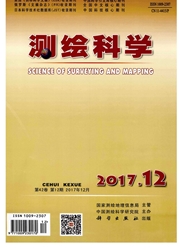

 中文摘要:
中文摘要:
针对当前县域尺度城镇化研究不足,以及传统数理统计模型无法描述城镇化空间集聚特征的薄弱点,从空间自相关视角来探讨县域尺度城镇化空间集聚特征。基于人口、经济、空间及社会4个维度构建县域城镇化体系,运用投影寻踪模型测度县域尺度城镇化,较科学地评价县域城镇化水平;采用空间自相关模型分析县域城镇化空间集聚,并解释其影响因素,实现了对县域城镇化空间集聚规律有效揭示。研究结果表明:安徽县域城镇化水平呈上升态势,存在"南高北低"区域分异;县域城镇化具有显著全局空间集聚,局部H-H区集聚"合-芜-马",L-L区集聚皖北地区;地理区位条件、交通网络改善、中心城市作用及发展政策倾向是影响安徽县域城镇化空间集聚主要因素。
 英文摘要:
英文摘要:
Aiming at the problem of the urbanization in county scale,as well as the traditional statistical methods cannot reveal urbanization spatial agglomeration characteristics;from the perspective of spatial autocorrelation,this paper study county urbanization spatial clustering.Based on the population,economy,space and social four dimensions,this paper set up the system of county urbanization,using projection pursuit model to measure the level of county urbanization,scientifically evaluate the level of county urbanization.By using the spatial auto-correlation model,the paper analyse the spatial agglomeration of county urbanization,and explain the influence factors,effectively reveal the spatial agglomeration rule of county urbanization.The results show that:since 1978,the overall county urbanization was increasing,but existed regional differences of "south high-north low".County urbanization level had a positive correlation with spatial cluster phenomenon,and the H-H areas mainly concentrated in southern Anhui counties,L-L areas mainly concentrated in northern Anhui counties.The geographical location,transportation network improvement,central city function and development policy were the main factors that affect the spatial agglomeration of the county urbanization in Anhui.
 同期刊论文项目
同期刊论文项目
 同项目期刊论文
同项目期刊论文
 期刊信息
期刊信息
